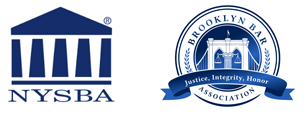The First Department, in Polanco v. Greenstein & Milbauer, LLP, held that the complaint for legal malpractice brought by a former client against his lawyers in a personal injury action stated a valid cause of action and should not have been dismissed upon the law firm’s motion for summary judgment. Specifically, the appellate court found that the client’s allegation that the firm urged her to settle her personal injury case could support her claim of legal malpractice.
~ ~ ~
Polanco v Greenstein & Milbauer, LLP
2017 NY Slip Op 03707 [150 AD3d 449]
May 9, 2017
Appellate Division, First Department
Published by New York State Law Reporting Bureau pursuant to Judiciary Law § 431.
As corrected through Wednesday, June 28, 2017
Aracelis Polanco, Respondent,
v
Greenstein & Milbauer, LLP, Appellant.
Winget, Spadafora & Schwartzberg, LLP, New York (Kenneth A. McLellan of counsel), for appellant.
Robert G. Spevack, New York, for respondent.
Order, Supreme Court, Bronx County (Kenneth L. Thompson Jr., J.), entered April 5, 2016, which denied defendant’s motion for summary judgment dismissing the complaint, unanimously affirmed, without costs.
On a prior appeal, this Court reversed the grant of defendant’s motion to dismiss, finding that the allegation “that defendant was negligent in urging her to settle the underlying personal injury action and in advising her that an MRI was not necessary and that its results would not lead to a more favorable outcome of her case,” supported a cause of action for legal malpractice (96 AD3d 438, 439 [1st Dept 2012]).
Defendant law firm failed to meet its prima facie burden on the instant motion for summary judgment (see Suppiah v Kalish, 76 AD3d 829, 832 [1st Dept 2010]). The firm’s legal expert did not address the stated basis for plaintiff’s legal malpractice claim, ignored her testimony as to the nature of pre-settlement discussions with her attorney, and misstated that attorney’s testimony. The firm’s radiologist’s opinion on causation, attributing plaintiff’s injuries to degenerative changes, was equivocal, inter alia, conceding that causation as to a herniation was “uncertain” and that certain changes seen on an MRI, taken over one year after the accident, could have been formed in a matter of “months.”
Even if the firm had met its initial burden on the motion, denial would be warranted based upon the existence of triable issues of fact raised by plaintiff. That plaintiff’s expert may have committed improper acts or malpractice bears on his credibility and not the admissibility of his testimony (see Williams v Halpern, 25 AD3d 467, 468 [1st Dept 2006]) and plaintiff’s surgeon’s attribution of her injuries to a different, plausible cause, creates a triable issue of fact on causation (see Linton v Nawaz, 62 AD3d 434, 439-440 [2009], affd 14 NY3d 821 [2010]; Norfleet v Deme Enter., Inc., 58 AD3d 499, 500 [1st Dept 2009]).
We have considered appellant’s remaining arguments and find them unavailing. Concur—Acosta, J.P., Renwick, Mazzarelli, Gische and Gesmer, JJ. [Prior Case History: 2016 NY Slip Op 30695(U).]






